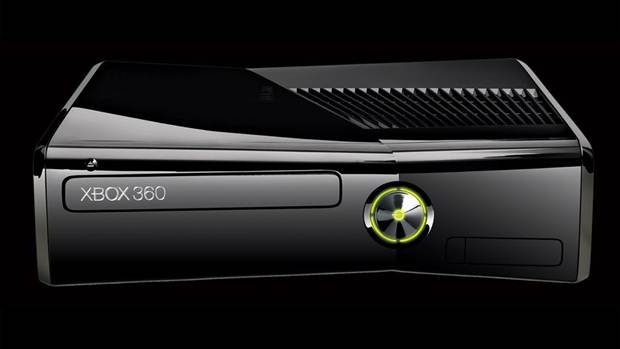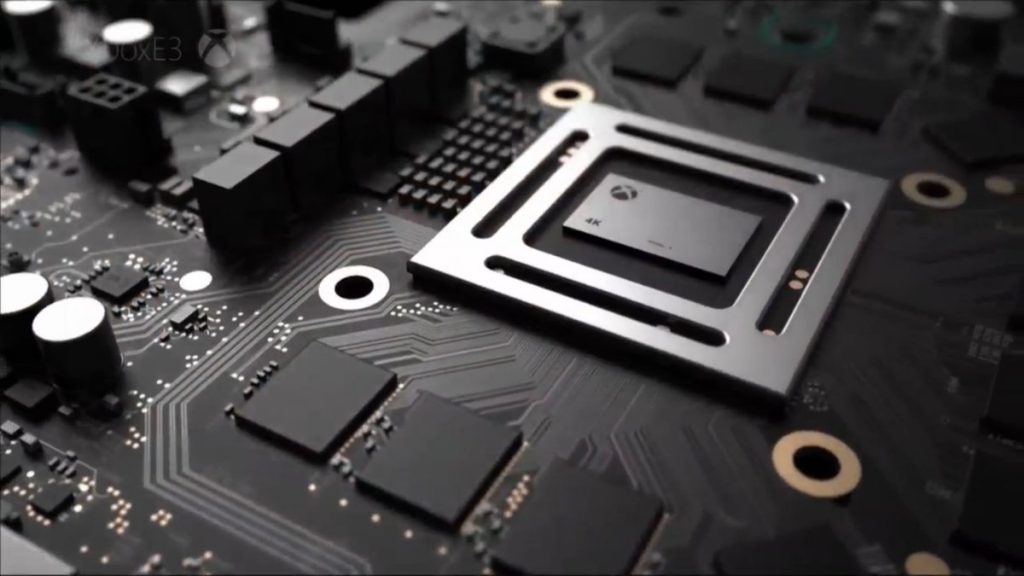
The race to mainstream 4K is on; 4K TVs aren’t exotic curios anymore. Streaming services have been delivering quality 4K content for quite a while now (and by quality content, we mainly mean The Man in the High Castle). In the PC gaming space, 4K monitors are more affordable than ever. The Korean monitor craze has had a second coming, with 40-inch FreeSync panels (!!??) at affordable price-points. I am getting one soon so hopefully I can write about it on GamingBolt.
If you’re satisfied with console settings and circa-30 FPS framerates, you can eke out a decent 4K experience with a sub-$300 graphics card. What does all this mean for consoles? For better or for worse, consoles are still where mainstream gaming’s at, and the real push for 4K gaming content comes from the PS4 Pro and Xbox Scorpio. Sales volumes matter, and it’s adoption of these consoles that’s really going to determine the direction 4K gaming will take over the next couple of years. With the Scorpio not yet out on the market, the PS4 Pro is our only real example of how consoles will be delivering ultra-high res gaming in the years to come. Unfortunately, the Pro doesn’t set a very high benchmark.
Apart from indies and a handful of last-gen remasters and some current gen games, the Pro struggles to output anything greater than 1440p at reasonable levels of performance. Checkerboarding’s, although a reasonable solution isn’t actually a real solution. As far as 4K console gaming is concerned, the yet-to-be-released Scorpio appears to offer a more tenable experience. This is because, at least going by preliminary specs, the Scorpio is more of a generational upgrade over the Xbox One than an iterative refresh, even if that’s not how Microsoft’s positioning it. With Scorpio, we’re in for some significant changes under the hood.
The Xbox One internals, courtesy Chipworks.
Notably, according to a leaked Microsoft whitepaper that made its way into Digital Foundry’s hands, the Xbox Scorpio will no longer feature an embedded ESRAM cache. Sony’s GDDR5 gambit paid off big time back in 2013: it was able to source GDDR5 modules at a viable price-point, giving the PS4 a significant advantage in terms of memory bandwidth over the Xbox One, which used slower DDR3 memory. Microsoft implemented a 32 MB cache of high speed ESRAM in an attempt to make up for the bandwidth deficit. The ESRAM offered a peak throughput of 192 GB/S. The caveat here is that the cache was only 32 MB in size. With the Scorpio, it’s a different scenario altogether. Scorpio will utilize GDDR5, allowing for 320 GB/S of memory bandwidth: this makes the ESRAM cache redundant simply because the main memory pool of the Scorpio offers substantially more bandwidth than the ESRAM cache offered on the Xbox One.
Embedded, high-speed memory caches have something of a history on Xbox platforms. Back in 2005, the Xbox 360 had a 10 MB cache of EDRAM, alongside the unified 512 MB pool of system/VRAM. The Xbox 360’s EDRAM cache didn’t exist to offset limited memory bandwidth, as with the Xbox One. Rather, the EDRAM cache was used to store the framebuffer in the last stages of the rendering pipeline, where bandwidth-intensive post-process effects and anti-aliasing could be implemented with a minimal performance hit. The EDRAM cache was the reason that so many Xbox 360 titles benefited from full-fat MSAA antialiasing. In contrast, many PS3 games made use of a post-process AA technique called quincunx AA, which introduced a significant amount of blur, or no AA at all. Assassin’s Creed is a case in point here: the Xbox 360 version featured 2x MSAA, while running noticeably better than the PS3 version.
The downside to the use of EDRAM was, again, its limited quantity. 10 megabytes isn’t really that much, no matter how you cut it. It wasn’t quite enough to store a single, 720p frame with 4x MSAA and postprocessing. Some developers took the easy way out here by having game run at sub-native resolutions. A 640p buffer with AA and post-process effects could fit into the 10 MB EDRAM cache, which is why titles like Halo 3 run at this resolution. Just as with the Xbox One’s ESRAM years later, the problem here is that rather than giving them additional performance headroom, developers were forced to work around the EDRAM cache.
With a 186 GB/S of bandwidth to 8 gigs of shared system and video memory, the PS4’s design didn’t require a high speed memory cache: all the memory was accessible at high bandwidths. While the PS4’s GPU did offer 50 percent greater shading power, the impact of high memory bandwidth on being able to consistently output at 1080p can’t be understated. Bandwidth scales with resolution: at higher resolutions, you’ll need all you can get. This was, to an extent part of AMD’s design philosophy with regards to the R9 Fury line: While Fury cards weren’t stellar performers at mainstream resolutions, their use of HBM memory—which offered an incredible 512 GB/S of bandwidth—meant that they scaled much better at higher resolutions than competing Nvidia parts. The air-cooled Fury, for instance, is only marginally faster than the GTX 980 at 1080p. But the gap widens from there, to the point that it competes with the 980 Ti and 1070 at 4K—I say this having owned and tested the Fury, Fury X, 980 Ti, and 1070 at various points of time. An increase in shader performance is necessary, but the Scorpio’s higher bandwidth 320 GB/S memory is key to it being able to offer genuine 4K experiences.
All of this seems to indicate that the Xbox Scorpio will offer a meaningfully better experience on 4K displays than the PS4 Pro. But at the end of the day, questions still remain about just what a “4K experience” means on console. As far as the PS4 Pro is concerned, it’s evident that “4K” just means upscaled 1440p. To be honest, we’re more than a little uncomfortable with the way that the people report on “4K games” on the PS4 Pro. I’ve gamed on a wide range of hardware. I’ve gamed at 1080p on a 1080p display, 1440p on a 4K display, native 4K on a 4K display, and with the entire range of resolution tricks, from Resident Evil 7’s interlaced rendering mode (aka checkerboarding), to Shadow Warrior 2’s multi-res shading technique. While some approaches look better than others, at the end of the day, upscaled 1440p is…1440p: there’s a degree of detail that you just can’t resolve unless you’re running at native 4K. If “it looks close enough” wasn’t grounds for a class-action lawsuit, we’d reckon that Microsoft and Sony would’ve had no scruples in labeling 900p titles “Full HD.”
It’s not a matter of semantics here. It’s about having enough graphics horsepower to output natively at a resolution that’s 4 times greater than 1080p. The Scorpio is touted as offering 4.5 times more graphics grunt than the Xbox One. 3840×2160 is four times as many pixels as 1080p. The math seems simple, right? Things become a lot less clear when you recall that the Xbox One rendered many AAA games at 1600×900, and often failed to hit a consistent 30 FPS lock, even at that low resolution. What would a 4K experience imply, then, for the Xbox One? Objectively, considering the Hawaii/Polaris-class internals in the Scorpio, we’re looking at a machine that may struggle to hit a native 4K at consistent framerates. If games on the Scorpio target a higher resolution, they may not feature additional boosts to fidelity, apart from the resolution bump itself.
The leaked Scorpio whitepaper itself advises developers to consider using half-resolution and sparse rendering. In half-resolution rendering, certain visual components, such as ambient occlusion, are rendered at half the framebuffer resolution. For a game outputting 4K on the Scorpio, this would mean that while the geometry is at native res, offering a sharp overall presentation, part of the effects pipeline may run at a lower resolution. This would offer net image quality that’s still noticeably better than on Xbox One. Sparse, or interlaced rendering is similar to what we’ve seen on the Pro, with the frame rendered in strips (or checkerboard squares), and neigbouring pixels extrapolated from the rendered portions and from previous frames. Scorpio may well be able to hit native 4K in many games, at least to a greater extent than the PS4 Pro. However, despite the significant bump to both shader capabilities and memory bandwidth, you really need to be on PC to experience native 4K gaming at comfortable framerates right now, free of any upscaling shenanigans.
All in all, we’re keeping our fingers crossed for Project Scorpio. It’s 2017, and PCgamers already been gaming in 4K for years. It’s about time that the consoles bridged the resolution gap. What we’re concerned about, though, are the compromises needed to get there. Graphics technology evolves quickly, and you really only need a certain amount of horsepower to run any multiplat from a given generation at a particular resolution. Cards as old as 2009’s Radeon HD 5870 (the first DX 11 card ever!), paired with a budget CPU, can offer a broadly comparable experience to the consoles at 1080p. You really only need a multiple of that for a reasonable, native 4K experience. While we do believe the Scorpio will hit native 4K in many games, including AAA titles, we truly wonder what an extra year in the oven, a 2018 Xbox product, would look like.

















